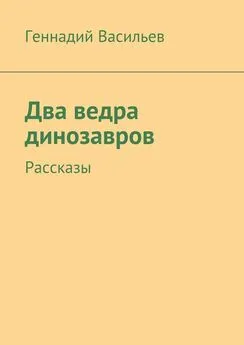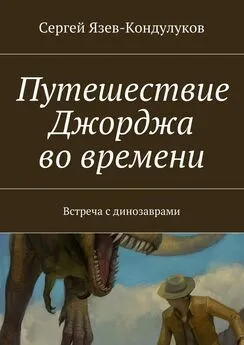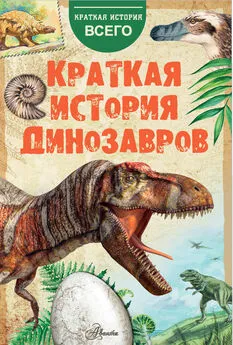Джордж Пойнар - Кто кусал динозавров?
- Название:Кто кусал динозавров?
- Автор:
- Жанр:
- Издательство:Princeton University Press
- Год:2007
- Город:Princeton, New Jersey
- ISBN:978-0-691-12431-5
- Рейтинг:
- Избранное:Добавить в избранное
-
Отзывы:
-
Ваша оценка:
Джордж Пойнар - Кто кусал динозавров? краткое содержание
В книге имеются чёрно-белые фотографии и рисунки. К сожалению, по причинам, не зависящим от переводчика книги, в ней отсутствуют упоминаемые в тексте многочисленные цветные вкладки. Может быть, когда-нибудь…
Кто кусал динозавров? - читать онлайн бесплатно полную версию (весь текст целиком)
Интервал:
Закладка:
45.Poinar, Jr., G. & Brown, A. E. 2002. A new genus of hard ticks in Cretaceous Burmese amber (Acari: Ixodida: Ixodidae). Systematic Parasitology 54: 199–205.
46.Poinar, Jr., G. O. & Brown, A. E. 2004. A new genus of primitive crane flies (Diptera: Tanyderidae) in Cretaceous Burmese amber, with a summary of fossil tanyderids. Proceedings of the Entomological Society of Washington 106: 339–345.
47.Poinar, Jr., G. O. & Brown, A. E. 2006. The enigmatic Dacochile microsoma Poinar & Brown: Tanyderidae or Bruchomyiinae? Zootaxa 1162: 19–31.
48.Oberprieler, R. G. 2004. Antliarhininae Schoenherr, 1823 (Coleoptera, Curculionoidea). pp. 829–853 in Brentidae of the World (Coleoptera, Curculionoidea), Sforzi, A. & Bartolozzi, L. (eds.). Regione Piemonte, Torino.
49.Heie, O. E. & Pike, E. M. 1992. New aphids in Cretaceous amber from Alberta (Insecta, Homoptera). Canadian Entomologist 124: 1027–1053.
50.Poinar, Jr., G. O., Gorochov, A. V. & Buckley, R. 2007. Longioculus burmensis , n. gen., n. sp. (Orthoptera: Elcanidae) in Burmese amber. Proceedings of the Entomological Society of Washington 109: 649–655.
51.Borkent, A. 1995. Biting Midges in the Cretaceous Amber of North America (Diptera: Ceratopogonidae). Backhuys Publishers, Leiden, 237 pp.
52.Bakker, R. T. 1986. The Dinosaur Heresies. Kensington Publication Corporation, New York, 481 pp.
53.Strauss, S. Y. & Zangerl, A. R. 2002. Plant-insect interactions in terrestrial ecosystems. pp. 77–106 in Plant-Animal Interactions, Herrera, C. M. & Pellmyr, O. (eds.). Blackwell Science, Oxford.
54.Peters, R. H. 1983. The Ecological Implications of Body Size. Cambridge University Press, Cambridge, 329 pp.
55.Labandeira, C. C. 2002. The history of associations between plants and animals. pp. 26–74 in Plant-Animal Interactions, Herrera, C. M. & Pellmyr, O. (eds.). Blackwell Science, Oxford.
56.Olesen, J. M. & Valido, A. 2003. Lizards as pollinators and seed dispersers: An island phenomenon. Trends in Ecology and Evolution 18: 177–181.
57.Chamberlain, C. J. 1965. The Living Cycads. Hafner, New York, 172 pp.
58.Cooper, M. R. & Goode, D. 2004. The Cycads and Cycad Moths of KwaZulu-Natal. Peroniceras Press, New Germany, KwaZulu-Natal, South Africa, 98 pp.
59.Fullaway, D. T. & Krauss, N. L. H. 1945. Common Insects of Hawaii. Tongg Pub. Co., Honolulu, 228 pp.
60.Hedrick, U. P. 1972. Sturtevant’s Edible Plants of the World. Dover Publications, New York, 686 pp.
61.Marvaldi, A. E. 2005. Larval morphology and biology of orycornynine weevils (Belidae). Zoologica Scripta 34: 37–48.
62.Naumann, I. D. 1991. Hymenoptera. pp. 916–1000 in The Insects of Australia, Naumann, I. D. (ed.), Vol. 2, 2nd ed.Comstock Publishing, Ithaca, NY.
63.Miller, D. 1984. Common insects of New Zealand. A. H. & A. W. Reed, Wellington, New Zealand, 179 pp.
64.Tillyard, R. J. 1926. The Insects of Australia and New Zealand. Angus & Robertson, Sydney, Australia, 560 pp.
65.Furniss, R. L. & Carolin, V. M. 1977. Western Forest Insects. Miscellaneous publication No. 1339, United States Department of Agriculture, Forest Service, Washington, D.C. 654 pp.
66.Smith, R. L. 1996. Ecology and Field Biology, 5th ed. Harper Collins, New York, 804 pp.
67.McClure, M. S. 1991. Density-dependent feedback and population cycles in Adelges tsugae (Homoptera: Adelgidae) on Tsuga canadensis . Environmental Entomology 20: 258–264.
68.Flanders, S. E. 1962. Did the caterpillar exterminate the giant reptile? Journal of Research on the Lepidoptera 1: 85–88.
69.Barrett, P. M. & Willis, K. J. 2001. Did dinosaurs invent flowers? Dinosaur-angiosperm coevolution revisited. Biological Review 76: 411–447.
70.Krassilov, V. A. 2003. Terrestrial Palaeoecology and Global Change. Pensoft Pub., Sofia, Bulgaria, 464 pp.
71.Schoonhoven, L. M., van Loon, J. J. A. & Dicke, M. 2005. Insect-Plant Biology, 2nd ed. Oxford University Press, Oxford, 421 pp.
72.Stevenson, D. W., Norstog, K. J. & Fawcett, P. K. S. 1998. Pollination biology of cycads. pp. 277–294 in Reproductive Biology, Owens, S. J. & Rudall, P. J. (eds.). Royal Botanic Gardens, Kew, England.
73.Krantz, G. W. & Poinar, Jr., G. O., 2004. Mites, nematodes and the multimillion dollar weevil. Journal of Natural History 38:135–141.
74.Krombein, K. V., Norden, B. B., Rickson, M. M. & Rickson, F. R. 1999. Biodiversity of the domatia occupants (ants, wasps, bees, and others) of the Sri Lankan myrmecophyte Humboldtia laurifolia Vahl (Fabaceae). Smithsonian Contributions to Zoology 603: 1–34.
75.Danforth, B. N., Sipes, S., Fang, J., & Brady, S.G. 2006. The history of early bee diversification based on five genes plus morphology. Proceedings of the National Academy of Sciences 103:15118–15123.
76.Stephen, W. P., Bohart, G. E. & Torchio, P. F. 1969. The Biology and External Morphology of Bees. Agricultural Experiment Station, Oregon State University, Corvallis, 140 pp.
77.Westrich, P. 1996. Habitat requirements of central European bees and the problems of partial habitats. pp. 1–16 in The Conservation of Bees, Matheson, A., Buchmann, S. L., O’Tolle, C., Westrich, P. & Williams, I. H. (eds.). Academic Press, London.
78.Poinar, Jr., G. O. 2006. Retracing the long journey of the insects. American Scientist 94: 376–378.
79.Free, J. B. 1993. Insect Pollination of Crops. Academic Press, London, 684 pp.
80.Mecke, R., Galileo, M. H. M. & Engels, W. 2001. New records of insects associated with Araucaria trees: Phytophagous Coleoptera and Hymenoptera and their natural enemies. Studies on Neotropical Fauna and Environment 36: 113–124.
81.Harrington, T. C. 1993. Biology and taxonomy of fungi associated with bark beetles. pp. 37–58 in Beetle-Pathogen Interactions in Conifer Forests, Schowalter, T. D. & Filip, G. M. (eds.). Academic Press, London.
82.Farr, D. F., Bills, G. F., Chamuris, G. P. & Rossman, A. Y. 1989. Fungi on Plant and Plant Products in the United States. American Phytopathological Society, St. Paul, MN, 1,252 pp.
83.Sequeira, A. S. & Farrell, B. D. 2001. Evolutionary origins of Gondwanian interaction: How old are Araucaria beetle herbivores? Biological Journal of the Linnean Society 74: 459–474.
84.Holmes, F. W. 1980. Bark beetles, C. ulmi and Dutch Elm Disease. pp. 133–147 in Vectors of Plant Pathogens, Harris, K. F. & Maramorosch, K. (eds.). Academic Press, New York.
85.Russin, J. S., Shain, L., & Nordin, G. L. 1984. Insects as carriers of virulent and cytoplasmic hypovirulent isolates of the chestnut blight fungus. Journal of Economic Entomology 77: 838–846.
86.Harrington, T. C. 2005. Ecology and evolution of mycophagous bark beetles and their fungal partners. pp. 275–291 in Insect-Fungal Associations: Ecology and Evolution. Vega, F. E. & Blackwell, M. (eds.). Oxford University Press, Oxford.
87.Bedding, R. A. 1993. Biological Control of Sirex noctilio using the nematode Deladenus siricidicola . pp. 11–20 in Nematodes and the Biological Control of Insect Pests, Bedding, R., Akhurst, R. & Kaya, H. (eds.). CSIRO Publication, East Melbourne, Australia.
88.Mamiya, Y. 1972. Pine wood nematode, Bursaphelenchus lignicolus Mamiya & Kiyohara, as a causal agent of pine wilting disease. Review of Plant Protection Research 5: 46–60.
89.Agrios, G. N. 1987. Plant Pathology, 2nd ed., Academic Press, New York, 703 pp.
90.Ziller, W. G. 1974. The Tree Rusts of Western Canada. Canadian Forestry Service Publication 1329, 272 pp.
91.Poinar, Jr., G. O. & Brown, A. E. 2003. A non-gilled hymenomycete in Cretaceous amber. Mycological Research 107: 763–768.
92.Alexopoulos, A. 1952. Introductory Mycology. John Wiley & Sons, New York, 483 pp.
93.Bessey, E. A. 1950. Morphology and Taxonomy of Fungi. The Blackiston Co., Philadelphia, 791 pp.
94.Newton, Jr., A. F. 1984. Mycophagy in Staphylinoidea (Coleoptera). pp. 302–353 in Fungus-Insect Relationsips, Wheeler, Q. & Blackwell, M. (eds.). Columbia University Press, New York.
95.Harris, K. F. & Maramorosch, K. 1980. Vectors of Plant Pathogens. Academic Press, New York, 467 pp.
96.Teakle, D. S. & Pares, R. D. 1977. Potyvirus (Potato Virus Y) Group, pp. 311–325 in The Atlas of Insect and Plant Viruses, Maramorosch, K. (ed.). Academic Press, New York.
97.Morales, F. J., Lozano, I., Sedano, R., Castaño, M. & Arroyave, J. 2002. Partial characterization of a potyvirus infecting African oil palm in South America. Journal of Phytopathology 150: 297–301.
98.Koteja, J. 1989. Inka minuta gen. et sp. n. (Homoptera, Coccinea) from Upper Cretaceous Taymyrian amber. Annales Zoologici 43: 77–101.
99.Koteja, J. 2004. Scale insects (Hemiptera: Coccinea) from Cretaceous Myanmar (Burmese) amber. Journal of Systematic Palaeontology 2: 109–114.
100.Baker, W. L. 1972. Eastern Forest Insects. United States Department of Agriculture, Forest Service, Miscellaneous Publication No. 1175, Washington, D.C., 642 pp.
101.Muniyappa, V. 1980. Whiteflies. pp. 39–85 in Vectors of Plant Pathogens, Harris, K. F. & Maramorosch, K. (eds.). Academic Press, New York, 467 pp.
102.Thresh, J. M. 1991. The ecology of tropical plant viruses. Plant Pathology 40: 324–339.
103.Manauté, J., Jaffré, T., Veillon, J.-M. & Kranitz, M.-L. 2003. Revue des Araucariaceae de Nouvelle-Caledonie, IRD/Province Sud, Nouméa, New Caledonia, 28 pp.
104.Rasnitsyn, A. P. 1992. Strashila incredibilis , a new enigmatic mecopteroid insect with possible siphonapteran affinities from the Upper Jurassic of Siberia. Psyche 99: 323–333.
105.Laurence, B. R. 1954. The larval inhabitants of cow pats. The Journal of Animal Ecology 23: 234–260.
106.Hanski, I. & Cambefort, Y. 1991. Dung Beetle Ecology. Princeton University Press, Princeton, NJ, 481 pp.
107.Nikolayev, G. V. 1993. The taxonomic placement in the subfamily Aphodiinae (Coleoptera, Scarabaeidae) of the new genus of Lower Cretaceous scarabid beetles from Transbaykal. Paleontological Journal 27: 1–8.
108.Krell, F. T. 2000. The fossil record of Mesozoic and Tertiary Scarabaeoidea (Coleoptera: Polyphaga). Invertebrate Taxonomy 14: 871–905.
109.Buss, I. O. 1990. Elephant Life. Iowa State University Press, Ames, 151 pp.
110.Lewin, R. A. 1999. Merde. Random House, New York, 187 pp.
111.Halffter, G. 1972. Eléments anciens de l’entomofauna néotropicale: Ses implications biogéographiques. In Biogéographie et Liaisons Intercontinentales au Cours du Mésozoique. 17th International Congress of Zoology, Monte Carlo 1: 1–40.
Читать дальшеИнтервал:
Закладка:


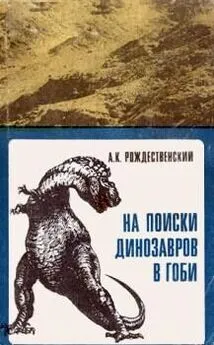
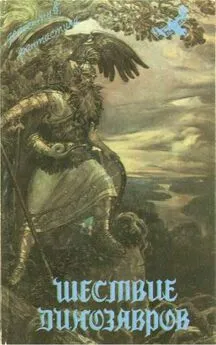
![Кейт Лаумер - Берег динозавров [Империум. Берег динозавров. Всемирный пройдоха]](/books/598305/kejt-laumer-bereg-dinozavrov-imperium-bereg-dino.webp)
